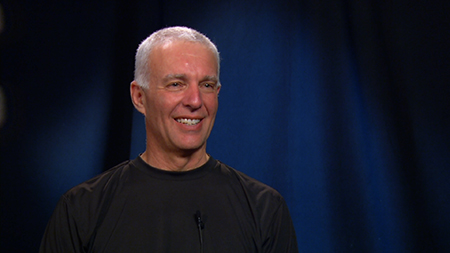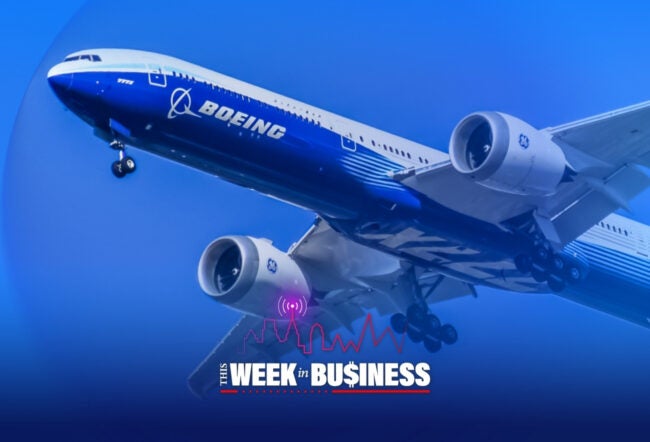Whether companies like it or not, their customers, employees and other stakeholders — connected through social media platforms into networks — are a fact of life. Increasingly, they can impose their will upon corporate managements, as banks realized a few months ago when a social media uproar forced them to roll back unpopular fees. Still, few companies or their CEOs so far have focused on the growing power of social media and networks. Why might that be?
According to Barry Libert, CEO of Open Matters and author of Social Nation, the reason is that companies tend to focus on internal issues such as operational excellence. External forces such as social networks that they cannot control tend to confound them. In this interview with Knowledge at Wharton, Libert discusses four specific steps — he calls them CARE — that companies can use to better harness the power of social networks to engage with their customers and inspire their employees.
Libert is one of the judges of the Social Media Leadership Awards, which Knowledge at Wharton is organizing in collaboration with Social Strategy1, a social media monitoring and analytics firm. For more information on this global competition, click here.
An edited version of the transcript appears below.
Knowledge at Wharton: Barry, thank you for joining us.
Barry Libert: Thanks for having me.
Knowledge at Wharton: As we know, Brian Dunn, the CEO of Best Buy, resigned in April, and the company has just announced massive employee layoffs. What does that show about the power of social media and its ability to affect corporate life?
Libert: Very simply, networks — including social networks, which include customers and employees — are gathering strength relative to organizations. And believe it or not, as they gather strength in the market place, they create real risks for enterprises. In many cases, like Best Buy, they take them down and destroy their business model.
Knowledge at Wharton: There have been other examples as well; Best Buy was hardly alone. What are some of the other recent examples?
Libert: My favorite example is Encyclopedia Britannica. That had been around for 244 years. It only took Wikipedia about 11 years to destroy a business that had been around for more than two centuries. So that’s another good one, but there are several others. There’s Kodak. There’s Best Buy. There’s Borders…. The list goes on. Social networks now have much greater power than the businesses that serve them.
Knowledge at Wharton: Earlier this year, some banks tried to impose fees but a virtual onslaught of social media outrage forced them to roll back their decision. If you were to take all these things together, what are some key lessons that companies should learn from these experiences?
Libert: I think risk is the first lesson, as is reward. Let’s talk about risk first. In the days in which you and I grew up, it was clear that execution or operations was about what we did. The first lesson organizations have to learn is that, today, risks live outside the organization because that’s where the power is — in the network and in social communications. That’s rule number one. Rule number two is you have to embrace that risk, and you have to embrace those social networks if you want to prosper in a socially networked world.
Knowledge at Wharton: What are the implications for companies when risk resides outside rather than within the organization?
Libert: That’s a great question. Currently organizations — especially corporate boards and management teams — are organized and oriented towards “inside” data — financial data, sales data, marketing data that’s internally focused data. They’re trained operationally to be sales executives or marketing executives or finance executives. I think people have to start thinking externally. They have to build brand-new skill sets. The first thing they have to do is begin to gather large amounts of data on customer sentiment and employee engagement. They need to get comfortable about the fact that that’s the data they need to make good decisions.
Knowledge at Wharton: Companies are not the only entities that are vulnerable to the growing power of social networks. As we saw during the Arab Spring, a number of governments fell because of social media. What drives some of these social media uprisings?
Libert: For a long time, we all have been waiting for a voice. It wasn’t more than a decade or so ago that Thomas Friedman wrote the book The World Is Flat. But he was thinking about it physically; he wasn’t thinking about the fact that once the world becomes flat, you and I can connect digitally. Although Friedman said that India and America are connected from an outsourcing perspective, he wasn’t thinking about crowd-sourcing and open-sourcing and virtual-sourcing. Once the world is digitally connected, all of a sudden countries and city states and religions are subject to people’s desires to be connected, regardless of their country and city state. Therefore, countries like the Arab nations and other countries will fall to these new ways of thinking.
Knowledge at Wharton: While the digital connections may exist, every once in a while something sparks an uprising — something goes viral. What sparks these waves and what sustains them?
Libert: There’s a big difference between past uprisings and those we see today. I always say I carry my weapon of mass destruction — I, along with you. This [holds up mobile phone] is my WMD. There are a billion of us connected through social networks and five billion people carrying one of these things. If you and I agree that the leader is not serving us — which is the important part, serving your constituents, not serving yourself — then an uprising becomes viral in today’s world. We begin to communicate through Twitter and Facebook and other social media channels, and we begin to realize that I feel the same way you do. That makes it easier for us to work together to change the leadership.
Knowledge at Wharton: In addition to Facebook and Twitter, are there other social media platforms that companies should be paying attention to?
Libert: Absolutely. People talk about those two social media platforms, but there are so many, and there are many new exciting ones. Everything from Dropbox, which is a way to store data, to Evernote, which affects how you share information, to Pinterest, which is how you build brand relationships. Now we’re talking just about America. You and I had a conversation about social media in China yesterday. There are social networks everywhere. Although people see Facebook and Twitter as the leaders, these are very powerful movements that are using today’s technologies to connect people with similar interests.
Knowledge at Wharton: Why are companies and CEOs often so reluctant to recognize the growing impact of social media?
Libert: There are two reasons. First, as I said earlier, we have all been trained to look inwards, to build operational competencies. The second reality is these outside networks are uncontrollable. They’re self-organizing. They flare up and they calm down. They organize and they disorganize. They are just not controllable. They’re individual in their nature, but connected collectively. Corporate leaders have not been taught and do not understand how to embrace this new way of acting with social media networks as powerful as these.
Knowledge at Wharton: Assuming companies figure out how to embrace these networks, how can this generate positive outcomes? In other words, how can the rewards of social media be found?
Libert: I think whether you consider investors, partners, customers or employees, the networks want to be embraced. They want to feel, just like you and I do, cared for. They want to know that you’re there to serve them, that governments are in the business of serving others, not serving themselves. So once companies, countries and industries go back to the basics — and start working to serve the people they are responsible for — I think the networks will feel cared for, and they’ll embrace the people who serve them. It’s a change in mindset, because my view is these networks want to be heard. As soon as they’re heard, they will act on behalf of the organizations.
Knowledge at Wharton: In practical terms, how do you actually embrace a network?
Libert: You let them have a voice in your business. You let them help you design your products though crowd-sourcing. You help them deal with your customer-service problems. You even help them design, like Doritos does, your marketing programs. You make them a part of your business, not just a marketing outlet for your business.
Knowledge at Wharton: We spoke earlier about companies that haven’t done such a great job recognizing the power of social media. Could you offer any contrary examples? You referred to Doritos. Are any other companies doing a good job leveraging social media?
Libert: Absolutely. Nike has done a spectacular job. And there’s some great research about it. They’ve reallocated — which is important — $800 million of their traditional advertising budget. And they did something very simple. They allocated it, as they said, “to where their customers are.” They allocated it to mobile devices, to social interactions, to crowd sourcing. I’m going to give you simple examples. They literally embedded, as you know, a mobile device in their sneaker. They now have a wristband that my son wears that allows you to keep track of how much running you’re doing and how much weight you’re losing. And you can socialize that with your friends. They let you keep track of how many miles on the courses you run. They’re taking their product and making it part of your life, both on a social and physical basis. They reallocated their capital and doubled their revenues, while they cut their costs in doing that.
Knowledge at Wharton: One final question. What advice would you give CEOs and corporate boards about two or three things they need to do to harness the power of networks and social media?
Libert: I recommend they should look at it as a four-step process: I call it CARE. The first step is to create. CEOs should urge their companies to create relationships with these networks … because they exist and are growing exponentially. They are larger than countries and companies now. Step two is to add; they should let networks add their competencies, their insights to product and service offerings. Third — and it is hard to believe this — CEOs need to begin to reduce the internal focus they have in their organizations. They should stop focusing on what they do and instead concentrate on what networks can do for them. This is what Apple has done with its Developer Network. Finally, CEOs need to eliminate their fear of social networks and media. They are here to stay, and there’s nothing you can do about it.



